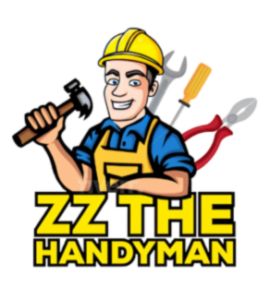
Welcome to ZZ the Handyman’s comprehensive guide on Creating Accessible Rooms for Disabled & Elderly People: In today’s society, inclusivity and accessibility in homes are not just considerations but essential elements that ensure comfort, safety, and independence for everyone. Whether you’re a homeowner looking to make modifications or a professional like ZZ the Handyman offering specialized services, understanding how to create accessible rooms can make a significant difference. This guide will explore the essential elements of designing accessible rooms, focusing on practical solutions that enhance safety, comfort, and independence.
Understanding Accessibility Needs
Before diving into specific modifications, it’s essential to understand the diverse needs of disabled
and elderly individuals. Accessibility requirements can vary widely based on the individual’s specific disabilities or limitations. However, some common challenges include:
Mobility Issues: Difficulty in moving around, whether using a wheelchair, or walker, or having limited balance and strength.
Visual Impairments: Challenges related to poor vision or blindness.
Hearing Impairments: Difficulties in hearing, which can affect communication and safety.
Cognitive Impairments: Issues related to memory, understanding, and processing information.
Addressing these needs requires a thoughtful approach to design and modification, ensuring that
every room in the house is both functional and safe.
Key Elements of Accessible Room Design
1. Entrances and Door
Accessible entrances and doorways are the first step in creating an inclusive home. Key
considerations include:
Wider Doorways: Standard doorways are often too narrow for wheelchair access. Doorways should
be at least 32 inches wide to accommodate most wheelchairs.
Thresholds: High thresholds can be a tripping hazard and impede wheelchair movement. Use low or no-threshold designs to ensure smooth transitions between rooms.
Automatic Doors: For individuals with limited strength or mobility, automatic door openers can be
incredibly beneficial.
2. Flooring
Flooring choices significantly impact mobility and safety:
Non-Slip Surfaces: Use non-slip flooring materials to reduce the risk of falls. This is particularly
important in areas prone to moisture, like bathrooms and kitchens.
Smooth Transitions: Ensure that there are no sudden changes in floor height, which can be tripping
hazards. Smooth, level transitions between different flooring types are crucial.
3. Lighting
Proper lighting is essential for those with visual impairments and for overall safety:
Natural Light: Maximize natural light through larger windows and skylights. Natural light not only
improves visibility but also enhances mood.
Task Lighting: Install task lighting in areas where specific activities are performed, such as reading or cooking.
Motion-Activated Lights: These are useful in hallways and bathrooms, providing immediate
illumination without the need for switches.
4. Furniture Arrangement
The arrangement of furniture can significantly impact mobility:
Clear Pathways: Ensure that there is enough space for easy movement, particularly for wheelchair
users. Pathways should be at least 36 inches wide.
Stable Furniture: Use stable, sturdy furniture that can double as support. Avoid lightweight, unstable pieces that can tip over easily.
Accessible Storage: Keep frequently used items within easy reach. Lower shelves and pull-out
drawers can make storage more accessible.
Room-by-Room Modifications
Living Room
The living room is a central space for relaxation and socialization:
Adjustable Seating: Provide seating options with varying heights and firmness to accommodate
different needs. Recliners and lift chairs can be particularly helpful.
Remote-Controlled Devices: Use remote controls for lights, fans, and entertainment systems to
reduce the need for physical exertion.
Kitchen
The kitchen is a functional space that requires careful planning:
Lowered Countertops and Sinks: Ensure that countertops and sinks are at a height accessible to
wheelchair users, typically around 34 inches high.
Accessible Appliances: Choose appliances with front controls and easy-to-read displays. Side-
opening ovens and drawer-style dishwashers are particularly user-friendly.
Pull-Out Shelves: Use pull-out shelves and drawers to make items in cabinets more accessible
without the need for reaching or bending.
Bathroom
Bathrooms are high-risk areas that require specific safety features:
Grab Bars and Handrails: Install grab bars near toilets, showers, and tubs to provide support and
stability.
Roll-In Showers: Roll-in or walk-in showers with no thresholds are essential for wheelchair users.
Include a built-in seat and handheld showerhead for added convenience.
Raised Toilets: Raised toilet seats or higher toilets can make it easier for individuals with mobility
issues to sit and stand.
Bedroom
A comfortable and safe bedroom is crucial for rest and privacy:
Adjustable Beds: Electric adjustable beds can help individuals find a comfortable sleeping position
and make it easier to get in and out of bed.
Closet Accessibility: Use lower rods and shelves in closets to make clothing and personal items easily reachable. Consider using sliding doors instead of hinged doors for easier access.
Bedside Controls: Keep light switches, phone chargers, and other controls within easy reach of the
bed.
Technological Enhancements
Technology can play a significant role in enhancing accessibility:
Smart Home Systems: Integrate smart home systems that can control lighting, temperature,
security, and appliances through voice commands or smartphone apps.
Emergency Alert Systems: Install emergency alert systems that can notify caregivers or medical
professionals in case of falls or other emergencies.
Video Doorbells: Video doorbells allow individuals to see and communicate with visitors without
having to move to the door.
Outdoor Accessibility
The exterior of the home should also be accessible:
Ramps and Railings: Install ramps with gentle slopes and sturdy railings at entrances. Ensure that
pathways are smooth and free of obstacles.
Accessible Parking: If applicable, provide accessible parking spaces close to the entrance with
enough room for wheelchair maneuvering.
Outdoor Lighting: Use adequate outdoor lighting to ensure safe navigation at night.
Funding and Resources
Making a home accessible can be expensive, but several resources and funding options are available:
Government Grants and Programs: Many governments offer grants and programs to help cover the cost of accessibility modifications. Research local, state, and federal programs for available
assistance.
Non-Profit Organizations: Organizations like Rebuilding Together and Habitat for Humanity often
assist with home modifications for those in need.
Insurance: Check with health insurance providers to see if they cover certain modifications,
especially if they are medically necessary.
Practical Tips for Homeowners
For homeowners considering accessibility modifications, here are some practical tips:
Assess Individual Needs: Conduct a thorough assessment of the individual’s specific needs. This may involve consulting with healthcare professionals, occupational therapists, or accessibility experts.
Plan Ahead: Think about both current and future needs. Aging-in-place modifications can help ensure that the home remains accessible as the individual’s needs evolve.
Prioritize Safety: Safety should be the primary focus of any modification. Identify high-risk areas and address them first.
Consult Professionals: Hire experienced professionals like ZZ the Handyman, who specialize in
accessibility modifications to ensure the work is done correctly and safely.
Stay Informed: Keep up with the latest developments in accessibility technology and design to
incorporate the best solutions into your home.
The Role of ZZ the Handyman
At ZZ the Handyman, we understand the importance of creating accessible environments for
disabled and elderly individuals. Our team is dedicated to providing high-quality, personalized service to meet the unique needs of each client. Whether you need to retrofit an existing home or
incorporate accessibility features into new construction, we offer a wide range of services, including:
Consultation and Assessment: We start with a comprehensive assessment of your home and
individual needs to develop a tailored plan.
Custom Modifications: From widening doorways to installing grab bars, we offer a variety of custom modifications to enhance accessibility.
Technological Integration: We can help integrate smart home systems and other technological
solutions to improve convenience and safety.
Ongoing Support: Our commitment doesn’t end with installation. We provide ongoing support and
maintenance to ensure that your home remains accessible and functional.
Conclusion
Creating accessible rooms for disabled and elderly individuals is not just about compliance with
regulations; it’s about improving quality of life and promoting independence. By focusing on the
specific needs of individuals and incorporating thoughtful design elements, we can create spaces
that are safe, comfortable, and inclusive.
At ZZ the Handyman, we are proud to offer our expertise in making homes more accessible.
Whether you’re looking to make a few modifications or undertake a complete home renovation, we
are here to help you every step of the way. Contact us today to learn more about our services and
how we can assist you in creating an accessible and welcoming home.
By embracing the challenge of creating accessible environments, we not only adhere to ethical and legal standards but also contribute to a more inclusive society where everyone, regardless of their physical abilities and can live with dignity and comfort.
Follow Us for More Updates:- FACEBOOK
READ MORE BLOGS:- BLOG

